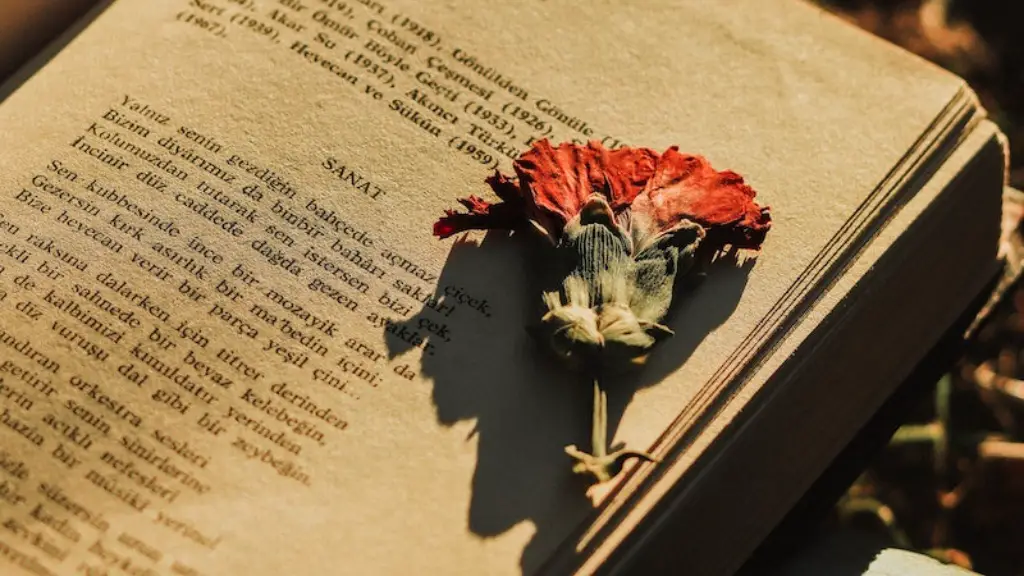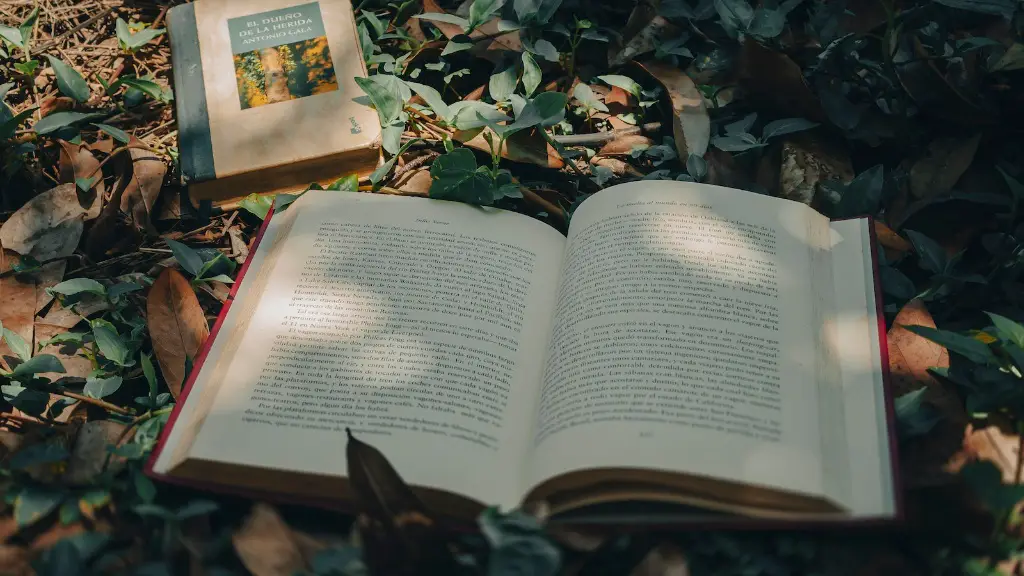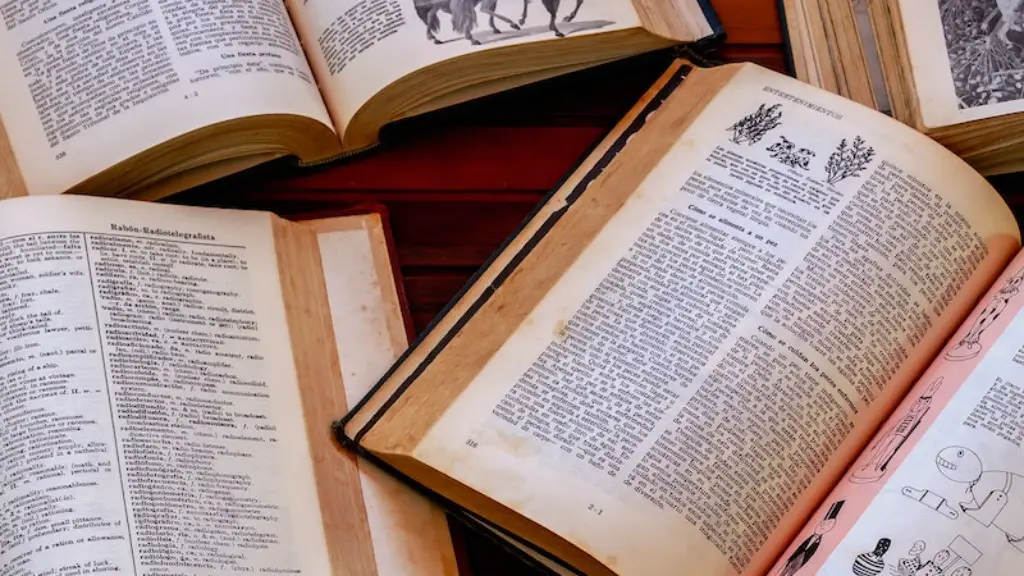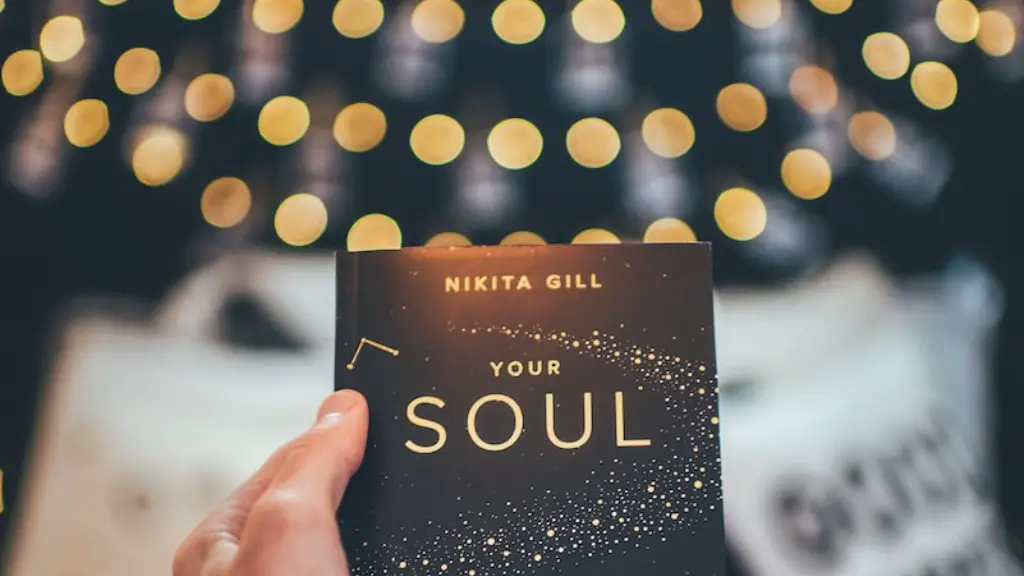Any aspiring singer-songwriter will tell you one of the most anxiety-producing steps in the creative process is coming up with compelling and thoughtful lyrics. With the guidance of a few basic principles and some creativity, turning poetry into lyrics for your songs can be one of the most rewarding and fruitful experiences as a musician. In this article, we will explore how to turn poetry into song lyrics in a way that honors the structure and style of the poem while simultaneously conveying its message in an effective musical setting.
The most important thing to keep in mind when turning a poem into a song is to understand the theme of the poem. Make sure you have a clear understanding of what is being said and the overall meaning of the poem. If you’re not sure how to interpret a certain phrase or line, do some research on the poet or the work to understand the nuances of the language used in the poem. Once you’ve established a basic understanding of the poem’s theme, start to develop a structure for your song. Ask yourself questions such as, “What kind of music will best convey the message of the poem?” or “What type of instruments should I use to musically convey the emotion of the poem?” These questions will help you to focus your creativity and construct a framework for your song.
Another helpful tip is to visualize the poem’s narrative arc as you read. Imagine not just the words on the page, but the images they conjure in your mind. Take the time to really immerse yourself in the poem and ask yourself, “What images and scenes are being described?”. Visualizing the poem in this way will help you to effectively communicate the poem’s narrative arc in your song.
Once you have a basic understanding of the poem’s theme and structure, you can start crafting the lyrics for your song. Most often, the easiest and most effective method for turning a poem into a song is to simply use the poem’s language and structure for your lyrics. You may need to modify the poem slightly to fit the song’s structure, but the key is to keep the spirit and tone of the poem intact. You can also choose to write a completely new set of lyrics that is inspired by the poem but not necessarily an adaptation. This can be an especially advantageous approach as it leaves you with more freedom to express your own ideas and gives you the opportunity to create an even more powerful and personal song.
Once you have a finished set of lyrics, your main focus is to set them to music. More often than not, the best way to express the emotion of the poem is by making use of a simple, yet powerful instrumental background. The goal should be to create a harmonious balance between the lyrics and the music. If you have access to an instrument, this is a perfect way to test out different styles and melodies to determine which pairs best with your lyrics. You could also use an online music sequencer to quickly and easily create digital tracks which you can then use to compare and contrast with your recordings.
Finally, make sure to take your time and experiment with different ideas and approaches. Every poem is unique and the best way to create an effective song is to be open-minded and creative. The process of turning a poem into a song is an art form and it is best to approach it with an open-mind and willingness to explore different ideas and approaches.
Emotional Connection
The emotional connection between the poem and the song is key to making sure your song turns out just right. It is important to think about the message or emotion you want to convey with the song and think about how it is conveyed in the poem. Writing strong and meaningful lyrics that are connected to the poem is essential when turning a poem into a song. You can take the emotion or theme of the poem and develop it further in your lyrics or create an entirely new story in the same vein. The important thing is that the emotion and story in the poem is clearly and effectively portrayed in the song.
When considering the music for the song, think about the instruments and chords you can use to highlight the emotion of the poem. The music should not be distracting and it should add depth and meaning to the song, not take away from it. A competent understanding of musical theory is especially helpful in this step. Understanding basic keyboard chords and rhythmic structures can help you to craft musical arrangements that will best convey the emotion of the poem.
Once you have written your lyrics and composed the music, take the time to listen to your song and make sure the song and the poem are in harmony. The melody, rhythm, instrumentation and lyrics should all work together to form a cohesive whole that effectively conveys the poem’s message in an effective and meaningful manner.
Rhythmic and Melodic Considerations
When turning a poem into a song, it is important to consider the rhythmic and melodic aspects of the poem. Pay attention to the syllabic structure of the poem. If a line of the poem follows a specific rhythm or pattern, try to recreate this pattern in your lyrics. Choosing the right words to fit the poem’s particular meter is key in creating a effective song. Think about the words you choose and make sure they flow naturally and fluidly with the poem.
When it comes to the melody of the song, the best way to stay true to the poem is to use the same melody as that found in the poem. Think about what notes and chords would best express the emotion of the poem and develop a melody accordingly. Using the tones, rhythms and melodies of the poem in your song will ensure you capture the essence of the poem and create a song that perfectly conveys its message.
Another important factor to consider when turning a poem into a song is the tempo. The pace at which you perform the song should reflect the message or emotion of the poem. When deciding the tempo for your song, think about what kind of feeling or message you want to get across to the listener and choose a tempo accordingly. Remember that faster tempos are more suited for joyful, upbeat songs, and slower tempos are better for more reflective and somber songs.
It is also important to think about the transitions between sections of your song. If the poem you are adapting follows a particular structure or form, gently guide the listener between sections. The transitions should be subtle and help to develop the narrative of the poem without distracting the listener or taking away from the poem’s message.
Finding Inspiration
Finding inspiration to turn a poem into a song is one of the most fun steps in the process. Taking the time to explore different poets and their work is a great way to find inspiration and to further your exploration of the poetic form. Visit libraries, attend lectures, and listen to recordings of poets reciting their work. All of these activities will help to open up your creative mind and allow the possibilities to flow freely.
Challenge yourself to take a poem you’ve never read before and turn it into a song. This is a great way to expand your creative potential and to exercise your songwriting skills. When writing a song based on a new poem, it’s important to take the time to understand the theme of the poem before trying to create a song. Doing research on the poet behind the poem can also be extremely helpful in understanding their writing and conveying its true message in your song.
Lastly, one of the best ways to stay inspired is to keep creating. Constantly create new songs, refine old ones, and surround yourself with music that inspires you. Switching up your inspiration sources can also be helpful. Don’t be afraid to pick up a book of short stories and find inspiration in the narrative. Taking inspiration from other sources is a great way to stay fresh and come up with new musical ideas.
Writing Original Material
Adapting a poem into a song is a great way to draw from existing material and turn it into something new and unique. Writing original lyrics for your songs is another great way to express yourself creatively. Most singersongwriters tend to go about it in one of two ways – either by starting with the music or with the lyrics. Whichever approach you choose, the key is to stay true to yourself and your style. Creating raw and honest songs is the best way to make sure your songs have a lasting impression on your listeners.
One of the best tips for writing original lyrics is to take your time and start by developing a few simple ideas. If you feel stuck, take a break or revisit the ideas later. Don’t be afraid to ask friends, family or other musicians for feedback and input – constructive criticism can be incredibly helpful in honing your songwriting skills. Remember to let your personality show through your writing and make sure to convey the emotion and meaning you want to get across in your lyrics.
Another great way to come up with new and interesting ideas is to take inspiration from the people and things around you. Everyday occurrences and conversations can often provide the foundation or topic for a great song. Keep a journal of ideas in which you write down anything and everything that piques your interest. Revisiting old ideas and ideas from others can jumpstart your creative process and help you come up with more unique and powerful songs.
Musical Arrangement
When it comes to the musical arrangement of your song, it is important to focus on the details as this is what will bring the lyrics and message of your song to life. When working with instruments for your arrangement, it’s important to keep it simple. Focus on the emotion and message of the song and choose instruments that best reflect the mood of poetry and enhance the overall effect of the song. Don’t be afraid to try out different instruments and melodies to see what works best.
When it comes to choosing the tempo, remember to stay true to the message of the poem or song. Consider the type of emotion or message you want to convey and choose a tempo and rhythm accordingly. A good rule of thumb is to use a slower tempo for more serious and reflective songs, and a faster tempo for more upbeat and cheerful songs. Don’t be afraid to experiment with different tempos and rhythms to create the perfect musical atmosphere for your song.
Lastly, don’t forget about the transitions between sections and the outro of the song. Pay attention to details such as crescendos and decrescendos and use them when transitioning between sections and at the end of your song. This can help to create a greater sense of emotion and create a powerful and lasting impact on your listeners.





